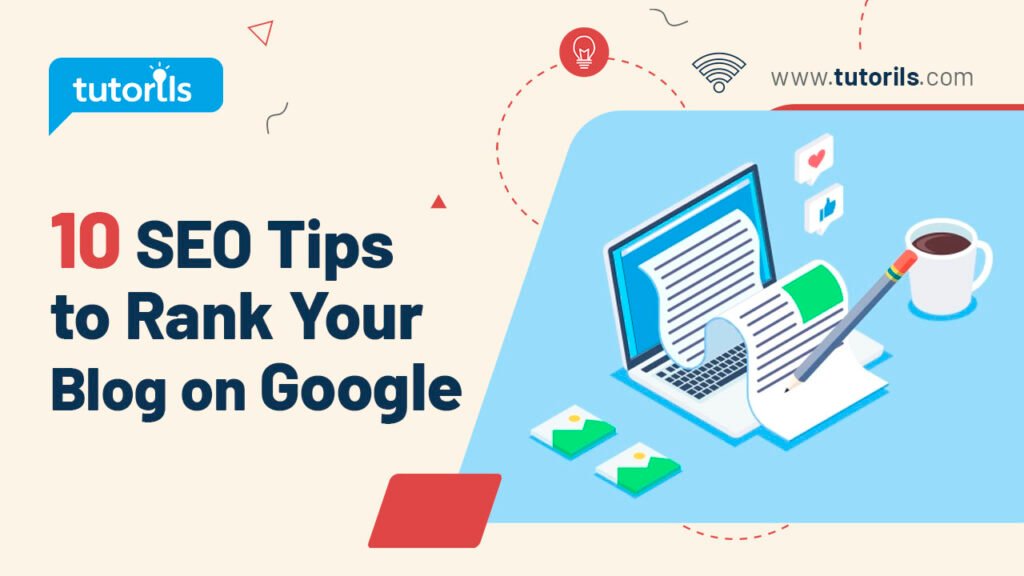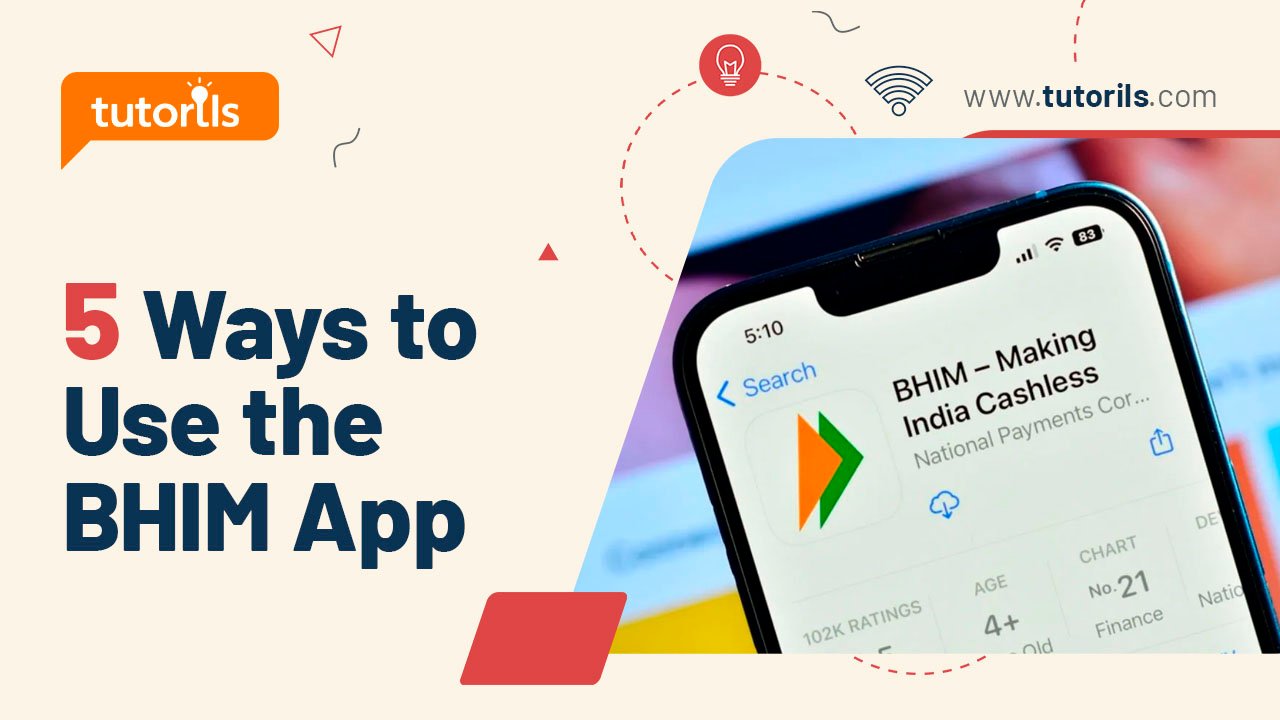Introduction
Want your blog to appear on Google’s first page? In 2025, ranking high requires more than just great content—it demands smart SEO strategies tailored to Google’s evolving algorithms. With over 600 million blogs online (per a 2025 Statista report), standing out is tougher than ever. Fortunately, these SEO tips to rank your blog on Google, curated by the experts at Tutorils #, will help you boost visibility and drive traffic. This step-by-step guide shares 10 actionable techniques to optimize your blog, complete with real-world examples and beginner-friendly advice. Let’s get your blog ranking higher today!
Why SEO Matters for Bloggers in 2025
Search Engine Optimization (SEO) helps Google understand and rank your content, driving organic traffic to your blog. Google’s 2025 updates prioritize user experience, content quality, and mobile-friendliness, making strategic SEO essential. By applying these SEO tips to rank your blog on Google, you’ll attract more readers and grow your online presence. Below, we outline 10 proven strategies to optimize your blog effectively.

1. Conduct Keyword Research
Keywords are the foundation of SEO. Targeting the right ones is critical to rank your blog on Google.
Step-by-Step Process:
- Use tools like Google Keyword Planner, Ahrefs (₹7,999/month), or Ubersuggest (free tier) to find keywords.
- Target low-competition, high-volume keywords (e.g., “best budget laptops 2025”).
- Focus on long-tail keywords (3–5 words) for niche audiences (e.g., “sustainable travel tips India”).
- Analyze competitors’ keywords using Ahrefs’ Site Explorer.
- Create a list of 5–10 primary and secondary keywords per post.
Real-World Example:
Emma’s travel blog ranked for “eco-friendly travel India” after targeting long-tail keywords with 1,000 monthly searches and low competition.
Pro Tip: Use Google’s “People Also Ask” section for keyword ideas to answer user queries.
External Resource: Start with Google Keyword Planner.
2. Optimize On-Page SEO Elements
On-page SEO ensures Google understands your content, a key step to rank your blog on Google.
Step-by-Step Process:
- Write a keyword-rich title (under 60 characters) including your primary keyword.
- Craft a meta description (under 160 characters) with your keyword and a call-to-action.
- Use your primary keyword in the first 100 words and 3–5 times throughout the post.
- Include keywords in H1, H2, and H3 headings (e.g., “SEO Tips for Bloggers”).
- Add alt text with keywords to images (e.g., “SEO tips to rank blog”).
Real-World Example:
Rahul optimized his tech blog post’s title and meta description, boosting click-through rates by 15% on Google.
Pro Tip: Use Yoast SEO (free) or Rank Math to check on-page optimization in WordPress.
3. Create High-Quality, In-Depth Content
Google prioritizes comprehensive, valuable content in 2025 to rank your blog on Google.
Step-by-Step Process:
- Write posts of 1,500–2,500 words for in-depth topics.
- Answer user intent (e.g., informational, navigational, transactional).
- Include actionable tips, examples, and data (e.g., “2025 Statista report”).
- Use short paragraphs (2–3 sentences) and bullet points for readability.
- Update old posts with fresh data or trends annually.
Real-World Example:
Sonia’s 2,000-word guide on “sustainable fashion tips” ranked on Google’s first page by addressing reader pain points comprehensively.
Pro Tip: Use AI tools like GROK to generate outlines for in-depth posts.
4. Improve Site Speed
A fast-loading blog enhances user experience and helps rank your blog on Google.
Step-by-Step Process:
- Test your site speed using Google PageSpeed Insights (free).
- Optimize images with tools like TinyPNG (free) to reduce file sizes.
- Enable caching with WP Rocket (₹4,000/year) or W3 Total Cache (free).
- Use a Content Delivery Network (CDN) like Cloudflare (free tier).
- Choose fast hosting like SiteGround (₹4,500/year).
Real-World Example:
Lisa reduced her blog’s load time from 5 to 1.8 seconds with WP Rocket, improving her Google ranking by three spots.
Pro Tip: Aim for a PageSpeed score above 90 for mobile and desktop.
External Resource: Test speed at PageSpeed Insights.
5. Optimize for Mobile-Friendliness
With 60% of searches on mobile (per 2025 Google data), mobile optimization is crucial to rank your blog on Google.
Step-by-Step Process:
- Choose a responsive WordPress theme like Astra (free).
- Test mobile usability with Google’s Mobile-Friendly Test (free).
- Ensure buttons and links are tap-friendly (at least 48px).
- Use readable font sizes (16px minimum) and simple layouts.
- Avoid pop-ups that disrupt mobile navigation.
Real-World Example:
Mark switched to a mobile-responsive theme, reducing bounce rates by 20% and boosting his blog’s ranking.
Pro Tip: Preview your blog on multiple devices using Chrome’s DevTools (Ctrl+Shift+I).
6. Build Internal and External Links
Links improve navigation and authority, key factors to rank your blog on Google.
Step-by-Step Process:
- Add 3–5 internal links to related blog posts or pages.
- Link to high-authority external sites (e.g., Moz, Search Engine Journal).
- Use descriptive anchor text (e.g., “SEO strategies” instead of “click here”).
- Submit guest posts to reputable blogs for backlinks.
- Monitor backlinks with Ahrefs or Moz (free trials).
Real-World Example:
Anita’s guest post on a travel site earned a backlink, improving her blog’s domain authority and Google ranking.
Pro Tip: Use broken link checkers like Ahrefs to fix dead links on your blog.
External Resource: Learn linking strategies at Moz’s SEO Guide.
7. Use Schema Markup for Rich Snippets
Schema markup helps Google display rich snippets, increasing click-through rates to rank your blog on Google.
Step-by-Step Process:
- Install a plugin like Schema Pro (₹4,000/year) or Yoast SEO (free).
- Add schema types (e.g., Article, FAQ, How-To) via the plugin.
- Include FAQ sections or step-by-step guides in posts for snippet eligibility.
- Test schema with Google’s Rich Results Test (free).
- Update schema regularly to align with content changes.
Real-World Example:
Priya added FAQ schema to her recipe blog, earning a rich snippet and doubling her click-through rate.
Pro Tip: Use structured data for recipes, reviews, or events to stand out in search results.
8. Leverage Social Media for Traffic
Social media drives traffic and signals engagement, indirectly helping rank your blog on Google.
Step-by-Step Process:
- Share posts on X, Pinterest, and Instagram with relevant hashtags.
- Use Buffer (₹500/month) or Hootsuite (₹1,999/month) to schedule posts.
- Create shareable visuals with Canva (free or ₹999/year).
- Engage with followers to boost post visibility.
- Add social sharing buttons with plugins like Social Warfare (₹2,000/year).
Real-World Example:
Vikram shared his tech blog posts on X, driving 1,000 monthly visitors and improving his Google ranking.
Pro Tip: Pin your best posts on Pinterest for long-term traffic.
9. Optimize for Voice Search
With 30% of searches voice-based in 2025 (per Search Engine Journal), voice optimization is key to rank your blog on Google.
Step-by-Step Process:
- Use conversational keywords (e.g., “how to start a blog in 2025”).
- Answer questions directly in posts (e.g., “What is the best hosting for bloggers?”).
- Include FAQ sections targeting voice queries.
- Keep sentences short and scannable for voice assistants.
- Optimize for local SEO if targeting regional audiences.
Real-World Example:
Neha’s FAQ on “best budget cameras” ranked in voice search results, driving 500 monthly visitors.
Pro Tip: Use tools like AnswerThePublic to find voice search questions.
10. Track and Analyze Performance
Monitoring performance ensures your SEO efforts pay off to rank your blog on Google.
Step-by-Step Process:
- Set up Google Analytics (free) via a plugin like MonsterInsights.
- Track metrics like organic traffic, bounce rate, and time on page.
- Use Google Search Console (free) to monitor keyword rankings and click-through rates.
- Identify low-performing posts and update with fresh content or keywords.
- Test changes with A/B testing tools like Nelio A/B Testing (₹2,500/year).
Real-World Example:
Amit updated an underperforming post with new keywords, increasing its rank from page 3 to page 1 in two weeks.
Pro Tip: Review Google Search Console monthly to spot new keyword opportunities.

What’s New in SEO for 2025?
Google’s 2025 algorithm updates emphasize AI-driven content analysis, user intent, and E-E-A-T (Experience, Expertise, Authoritativeness, Trustworthiness). New features like AI Overviews prioritize concise, high-quality answers, and Core Web Vitals demand faster load times. Use these SEO tips to rank your blog on Google by focusing on mobile-first design, structured data, and authoritative backlinks to stay ahead.
Comparison Table: Free vs. Paid SEO Tools
| Tool | Free Features | Paid Features | Cost |
|---|---|---|---|
| Google Keyword Planner | Basic keyword research | Advanced metrics with Google Ads | Free |
| Yoast SEO | Basic on-page SEO, readability | Premium schema, internal linking | ₹7,500/yr |
| Ahrefs | Limited backlink/keyword analysis | Full competitor analysis, rank tracking | ₹7,999/mo |
| SurferSEO | None | Content scoring, keyword suggestions | ₹4,999/mo |
| Google Analytics | Full traffic tracking | N/A | Free |

Recommended Tools for Blog SEO
These tools enhance your ability to apply SEO tips to rank your blog on Google. Prices are in INR where applicable.
| Tool/App | Purpose | Price | Key Features | Link |
|---|---|---|---|---|
| Ahrefs | Keyword and backlink analysis | ₹7,999/mo | Competitor analysis, site audits | Ahrefs |
| Yoast SEO | On-page SEO optimization | Free/₹7,500/yr | Keyword optimization, schema markup | Yoast |
| SurferSEO | Content optimization | ₹4,999/mo | Content scoring, SERP analysis | SurferSEO |
| Google Search Console | Performance tracking | Free | Keyword rankings, click-through rates | Search Console |
| Google Analytics | Traffic analysis | Free | User behavior, traffic sources | Analytics |
| WP Rocket | Site speed optimization | ₹4,000/yr | Caching, lazy loading | WP Rocket |
| TinyPNG | Image compression | Free/₹2,000/yr | Reduces image file sizes | TinyPNG |
| Buffer | Social media promotion | Free/₹500/mo | Scheduling, analytics | Buffer |
| Rank Math | SEO optimization | Free/₹4,000/yr | Advanced schema, keyword tracking | Rank Math |
| GROK by xAI | Content ideation | ₹2,500/mo | AI-generated outlines, X trend analysis | grok.com |
FAQ Section
What are the best SEO tips to rank my blog on Google in 2025?
To rank your blog on Google, conduct keyword research, optimize on-page elements (title, meta description), create in-depth content, improve site speed, and build links. Use tools like Yoast SEO and Google Analytics for better results.
How can I find keywords to rank my blog on Google?
Use Google Keyword Planner or Ahrefs to find low-competition, high-volume keywords. Focus on long-tail keywords (e.g., “best SEO tips 2025”) and check “People Also Ask” for user intent.
Why is site speed important for Google rankings?
Site speed impacts user experience and Google’s Core Web Vitals. Optimize with WP Rocket, compress images with TinyPNG, and use fast hosting like SiteGround to rank your blog on Google higher.
How do backlinks help rank my blog on Google?
Backlinks from high-authority sites signal trust to Google. Write guest posts, create shareable content, and monitor backlinks with Ahrefs to boost your blog’s ranking.
Can AI tools help with SEO for my blog?
Yes, AI tools like GROK generate keyword-rich outlines, while SurferSEO optimizes content for rankings. Combine with human edits to ensure authenticity and apply SEO tips to rank your blog on Google.
Conclusion
With these 10 SEO tips to rank your blog on Google, you can boost your blog’s visibility, attract organic traffic, and grow your audience in 2025. From keyword research to mobile optimization, these strategies are beginner-friendly yet powerful. Start implementing them today to climb Google’s rankings and make your blog a success!
Have questions or SEO success stories? Share in the comments, join our newsletter at Tutorils #, or explore more blogging tips. Let’s get your blog to the top!
Note: All photos and videos sourced from Google or YouTube. For content issues, contact Tutorils Contact Us.
More Resources
If you find any issues with this post or wish to have it removed, please reach out: Contact Us.






